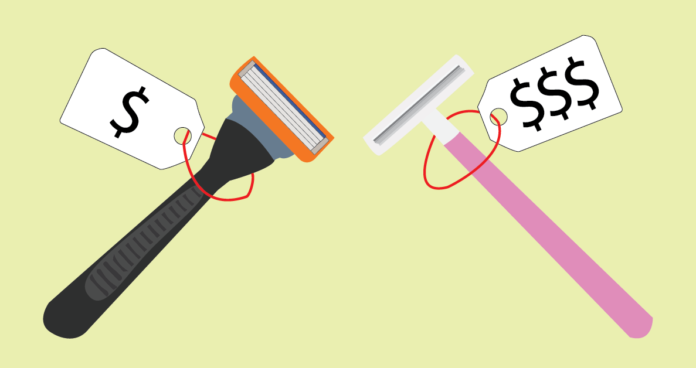Many people have acknowledged a gender wage gap of about 18 cents, according to the Government Accountability Office, but fewer have discussed the “pink tax” behind body hair stigma.
For women, body hair used to be a signal of class. Upper- and middle-class women would shave their bodies to appear more attractive while working-class women would not. Having unshaven body hair was often associated with being an immigrant new to American cultural norms.
“1915 is when the Gillette razor becomes safe, and people have it in their homes, and that changes a lot of things,” Lauren Shoemaker said.
Shoemaker teaches the Introduction to Gender Studies and Literature of the Women’s Movement courses at SRU and has been teaching for 15 years. In those two classes, she discusses where ideas about body hair come from and how they have changed.
In the World War II era when nylon stockings were less available, it became expected for women would shave their legs to wear a dress, she said.
Women were later expected to shave their armpits when the sleeves on women’s dresses became shorter.
Cindy LaCom at SRU talks in their Gender Studies and Porn Culture class (GNDR 400) about the history of hair removal and how the pornography industry has influenced hair removal practices.
“One of the biggest things, when we think about the practice of hair aesthetics, are questions of autonomy and cultural pressures that we may not be conscious of,” they said.
The cultural normal has changed so that women are criticized for having body hair, which LaCom thinks has set society back to the notion that men and women are different or unequal.
One of the industries that reinforces this cultural norm is the pornography industry with pubic hair removal. According to the National Library of Medicine, pubic hair removal is significantly associated with younger age and increased interest in sex.
“From about the 1970s on, we’ve seen shaving bikini lines, and even shaving all pubic hair with the rise of pornography,” Shoemaker said.
The evolution of video and high definition make it even easier to see body hair, she added.
“Teen porn is regularly one of the top five search terms [in porn],” LaCom said. “What’s called PCP, or pseudo child porn, uses very young actors who have been presented as very thin, flat-chested and petite.”
PCP actors are also often presented eating lollypops and with braids in their hair, they said.
Men are also encouraged to have a shaven pubic area in porn to make their genitals look larger.
“The spectacle of the body being smooth, oily and attractive in that way became part of our culture’s aesthetic,” Shoemaker said, “especially for women’s bodies.”
Another industry reinforcing body hair stigma, and related more closely to the pink tax, is the beauty industry.
According to the United Nations, the pink tax is the phenomenon of goods and services marketed to women being more expensive than similar items marketed to men.
The practice of hair removal is often expensive. One New York City study found that, on average, personal care products targeting women were 13% more expensive than similar men’s products. Accessories were 7% more expensive, and adult clothing was 8% more expensive.
For razors, the National Library of Medicine found that women’s four-blade razors were priced 66% higher than men’s, and women’s five-blade razors were priced 47% higher than men’s.
Waxing is also an option but is widely regarded as painful. A shaved or waxed pubic region can also lead to greater risk of infection.
A U.K. study found that women’s deodorant was on average 8.9% more expensive than men’s. Women’s moisturizer was 34.28% more expensive, according to the World Economic Forum.
Beauty salons are also offering more services that were not previously offered like the tattooing and threading of eyebrows.
Men are not immune to cultural norms reinforced by the beauty industry either.
According to ABC News, men spend about $800 million on hair transplants and $250 million on hair pieces annually.
Masculinity is often associated with a full head of hair, so men spend money on products to treat hair loss with little to no evidence that these products work.
Outside industry, cultural norms have evolved to the point where many women feel the need to shave before going to a bar or party if they plan to have sex.
“It acts as a deterrent for them because they know that [even] if they hooked up with somebody that they may never see again, they might feel embarrassed or ashamed,” LaCom said, “and that’s a very strong cultural enforcer.”
Years ago, body hair may not have deterred men from hooking up with women. Today, men are more likely to turn down hooking up if they feel the woman’s body is too hairy.
Many women also decline to wear shorts when their legs aren’t shaven.
“My goal would be to get people to ask the question, ‘Why am I doing this?’” LaCom said.








